Leaderboard
Popular Content
Showing content with the highest reputation on 09/11/19 in all areas
-
That's true. I started seriously researching self build around 2008, about the time I joined this forum's predecessor, although we'd talked about it for a few years before that. My first post there was more than a bit naive, and answered patiently by @Temp, who pointed out the importance of finding a plot before thinking about house design. Interesting that we're both still around on here. Off the top of my head I think there can't more than a small handful from that long ago still here. All told I spent two years or so doing part time research, before I retired, then another two years of full time research and plot hunting, then another year sorting out the design of the house after that, before submitting the planning application.3 points
-
2 points
-
One thing everyone on here has in common is the ability/willingness to do some research for themselves.2 points
-
2 points
-
I would have called it a door with a full height side light.2 points
-
Use 400mm centres with a non standard one at one end. It simplifies boards and other materials.2 points
-
It feels to me that we must acknowledge their training and experience as they should ours. It is perhaps this tension that, when not 100% focused on creative synergy between architect and client, creates the perception of arrogance and aloofness often alluded to here as the problem with architects. In the end if you are not a trained and practising architect you will need an open mind and a very large quantum of empathy with their drives and motivation to get the very best out of them. In their training they are taught how to elicit thoughts, ideas and feelings from clients and then interpret them in the designs that have been commissioned of them. As with the rest of us they do not know what they do not know (or have not been told) and in terms of best practice in aspects of construction, such as highly insulated homes where solar gain plays a bit part, many will not be versed. This does not in itself detract from their wider value in driving forward the built environment albeit at the behest of clients. Aye there is the rub! As in all soft systems, those constructed by humans, the CATWOE acronym, coined so aptly by Peter Checkland (et al) tells us, how we might come to understand one another and create solutions to problems once they are mutually understood with clear root causes identified and shared. CUSTOMERS, ACTORS, TRANSFORMATIONAL PROCESSES, WORLD VIEWS, OWNERS & ENVIRONMENTAL CONSTRAINTS. As self builders we are often very clear about what we want and this is a constraint architects are trained to work with, why, because knowing what you want is not always what you should have or need. There is, after all, often a fundamental difference between what you need and what you want. As a professional I was always trained to give the customer what they needed rather than just what they wanted, unless the two were 100% coincident. They wanted a degree, they needed an education. In the end they, formerly the state, were paying me to improve things for them and they acknowledged that they were employing me to support, explain and curate their journey. In taking them off piste you had to be able to justify the choice, show them things they had never considered and make the case for driving it home. Sorry @SteamyTea, I cannot agree - design, architectural or otherwise, is at the core of our environment be it good or bad, engineering delivers great designs based on leveraging sound science only if the initial design is sound. In most things it is not difficult to see the juxtaposition between form and function and perhaps which follows which is the fulcrum upon which this discussion balances. Houses, Le Corbusier said, are machines for living in and he was right but living is a human construct, back to CATWOE, not an engineering one, well thankfully not yet anyway! Perhaps its sharing our ideas and allowing others to show us as yet untravelled paths we find hard to do?2 points
-
The week has finally arrived to have our old oil boiler and a huge 500L water tank ripped out and a new AHSP installed Can't wait - especially as we now have no hot water until it's connected! So far the oil tank has been removed, we've dug a big trench to lay the pre-insulated pipe into, and the old Whitebird 120/150 oil boiler is going on eBay! Hopefully today the cylinder will be in so we can have a warm shower, then everything else will get connected up and commissioned tomorrow1 point
-
A friend is having her kitchen done shortly and has purchased thin solid laminate from Worktop Express. Beautiful and harwearing with a very contemporary look due to the thinness of it.1 point
-
1 point
-
Not a big supporter of corian. Highly overrated product for kitchen worktops. Originally developed for architectural cladding applications its found acceptable in hygenic applications such as bathroom and kitchens. but the product is very soft, easily scratched and burnt (though repairable). If one were to lay criteria to develop a good worktop surface i think scratch and heat resistance in a kitchen would be very high on that list.1 point
-
It's something I had yet to turn my mind to tbh @JSHarris. I have been in contact with Wunda ref UFH as I will need the pipe soon to put into the slab and they asked what I would be using. I remember reading that SunAmp can be used for DHW and space heating hence the query. Your answer settles in my mind that it's a 'pump' idea which suggests that in a house that doesn't have gas the ideal setup is to leave SunAmps to the DHW side of life and an ASHP for the UFH.1 point
-
Sure, I know what "a" house looks like. Indeed, I know what several look like. I also know what elements I've liked and disliked in the 20+ houses I've lived in over the years. What I didn't know was how to design a house that would fit my family now and in the future, would work with the significant plot restraints that we had, and would feel amazing to live in. I get it, lots of people know what they want and can't see the point of architects. Personally, I'm really sensitive to my surroundings, and wanted to live in something that was a joy to arrive home to. We've accomplished a lot of that, I think, in a way we wouldn't have managed had we come up with something ourselves. The first architect we engaged I really didn't gel with, ideas-wise. She was a Passivhaus specialist, but I eventually got the impression that she wasn't great at residential houses (long story as to how we ended up with her out of the four or five architects we initially interviewed). The second architect couldn't have been more different. He nailed the design brief almost perfectly with his first shot, presenting a layout that hadn't occurred to me in the hundreds of attempts I'd made myself. We ended up building a tweaked version of that design. Incidentally, the external appearance was something the architect had surprisingly little to do with. He had various ideas for pitched roofs and materials, but in the end I came up with my own external treatment that we preferred to anything he'd done. He was cool with that (and why wouldn't he be). In the scheme of things, he wasn't that expensive, added a lot to the project, and reduced our stress levels. I know others have had different experiences, but that's ours.1 point
-
There has been a couple of occasions in architect meetings when I've looked like I know what I'm taking about only because I'm armed with advice from here.1 point
-
Very good point, although we do have one or two that have pretty much gone down the turnkey route, really commissioning a new house rather than self build, perhaps.1 point
-
This is probably not the correct term but with regards to value and perception is this forum not a bit of a self selecting group? On here people are generally willing to get there hands dirty and DIY most things, even professional services and design so the perception of value is possibly slightly skewed.1 point
-
K rend do an anti algi Pick a dry day Spray with a garden sprayer Let the rain do the rest over the next couple of days As long as you don’t use a turbo type Nozzle A jet wash will bring it up like new If you are looking for a very white white that can be applied on all surfaces The Sw K rend is a good all rounder1 point
-
True, we overvalue diamonds and celebrities and undervalue clean water and social care.1 point
-
Just watch out for algae growth - blows onto the wall and gets into the finish and then blooms when it's damp - jet washing does not shift it (but will take the topcoat off your render) When I get mine replaced I will try and treat with an anti-fungal product.1 point
-
@pocster Looks nice, very similar to what I would like. Can you tell me what K-Rend product you used and colour? I get confused with all the different products they have!1 point
-
I wouldn’t bother with silicone I normally tape the render with Jaffa taped and point with a motar gun Then flatten it down with a finger trowel I’m just trolling through my phone for a picture1 point
-
Problem with wages/salaries are that in reality, it has nothing to do with what is "fair". I personally would argue that a Nurse or a teacher has at least as much value to society than an Architect. And certanly much more value than anybody working in the financial sector. Do they get paid accordingly? No. This has to do with a lot of things, but partly with how we value ones work as a society. When it come to the differences in earnings to fees. Like mentioned by @SteamyTea. most people I know don t work for a lot more than 18.000-24.000/year. I have a few friends that are a lot more educated than I am , having spend a good couple of tens of thousands at Uni and came out with verious (good) degrees. None of them making more than 35k/year. One recently decided to dump his Teaching career in favour becoming an are Manager for the Nations favourite Food Discounter , in order to get a decent wage and a company car with it. Not very challenging job, just high stress. So it is understandable that a lot of people (including myself) are a but annoyed when hourly fees of 60,70,80 or more £ are chucked into a conversation as if it was nothing. The dilemma is, that none of the professionals charging those amount are really getting anywhere near as much. It is in NO relationship . Hardly anybody reaches a 50% cut out of the fees they charging, which means the side costs of running any (small) business are just too high in this country.1 point
-
The lad who did my landscaping had that issue - was cock a hoop at winning 10 out of 12 jobs he bid for but was stressing over fitting them all in, hiring extra labour etc. I shared my opinion that he needed to put his prices up until the job win rate was manageable and he'd still make the same, if not more money. Which he did... obv. not to me though1 point
-
OK what about a white frame sealant such as around windows. The concern being it won't match the render or the stone1 point
-
I always meant to seal the gaps where my render met the soffits (which were installed after the render). Never got round to it and not sure there's a massive benefit other than aesthetics as there's insect screen top and bottom and I'd never get up to clean it. Bit of a shadow gap effect. Anyway, as my render is likely need removed and replaced, glad I didn't bother. So my choice would to leave it be and see how you live with it - nice home for the spiders...1 point
-
No, it’s not part of the build and not part of your approved plans. Similarly you can’t claim for sheds etc.1 point
-
Clear is fine. White CT1 goes "near custard yellow" to quote the Welsh Wizard.1 point
-
That touches on my pet topic, the level of architects fees. Roughly what percentage do you charge? In my brief encounter a few years ago, the architects I spoke to wanted to charge me in the order of 10%. Now if your fees are anything like that, that's £25K per project (about what they wanted to charge me) and if you are doing "a couple of dozen" like that each year, then that is £600K per year. Are you REALLY earning that much per year (less expenses of course)? Or to put it another way, if you are doing 24 such projects in a year, then you are expecting to devote 2 man weeks to each project. That does not sound like much time at all, and certainly not £25K worth of time. You are doing nothing to dispel my impression of architects as vastly over paid. I invite you to put your side to redress that feeling.1 point
-
It probably depends on what's on/between/under them. If you're fitting plasterboard under/insulation between/square-edge boards on top then 400mm with one narrow one at the end would be best to align with the other materials. If the underside is bare/battened, no insulation between and tongue and groove boards on top you could do whichever you prefer (but I think most would still go for standard centres).1 point
-
1 point
-
We've got one of those. I didn't know it was called a vestibule door frame either. I just asked for an entrance door with a sidelight. Everyone seemed to know what it was.1 point
-
There are so many types of “self builder” that it becomes near impossible I expect to define. Some call giving a big cheque to a builder to do a turn key a self build, and at the other end there are the people who do everything themselves. Some need the architect to do the plan and they can construct it, others fit in the scale from the “designed and built it myself” to “I painted the downstairs WC”... It does beg the question about how many there are out there though that truly “self build”1 point
-
We were probably a bit clueless about the options so an architect seemed a good idea. They did come up with ideas which were good and added to the design with relatively little cost - things that would probably fit in the 'artistic' category. I think it's one area where research might not help - I'll happily admit my creative side is lacking!1 point
-
Hi, my name is Adam and I have a degree in Electrical engineering and 35 years experience as a designer of radar, mobile phones, equipment to help aircraft land and lots of stuff the average guy in the street wouldn’t have heard about. I am also an enthusiastic builder with quite a lot of experience of the various skills. Don’t know a lot about foundations – which I have heard people say is the most difficult. I can answer most questions about electricity, but there may be some aspects of building practice that I am unaware of.1 point
-
Have to admit I'm not keen on refurbs. Would rather pay the bit extra for new and with the extra year guarantee. I have the V6 (bought in early 2015 when it was the latest model). Cost me just shy of £300. It's still going strong though so I haven't felt the need to upgrade.1 point
-
They're fake columns and that's the end of it.1 point
-
One of the reasons I moved to the Highlands. Add the sound of water running through the burn to the birdsong and you get the idea.1 point
-
I can send you a piece of string to provide the answer to that one ?.1 point
-
Hmm. My initial question was neutral. I asked it because I was musing on the use of the word and the self-definition of the profession. For TV, I would say: 1 - It is a lot about how you get to be on TV or advising, and that is very much about who you know and being in the right place at the right time. 2 - The skill set needed is different to that of a construction professional, in that being a TV presenter you need TV presenter, and also have to be photogenic or 'interesting', and have a "Face that Fits" That latter involves a whole set of prejudices and assumptions. 3 - I think it is also about "architects" being stereotyped. Part of that is us, audiences, and the TV companies not having a clear understanding, and part of that is lack of clarity on the professional side. For example how many here would be able to write a 100 word description of the professional competence / role of an architect. I think we could all try, but would all miss parts out with which we are not acquainted. For self-build I would say: 1 - We are overwhelmingly inexperienced clients, and there is no opportunity to gain experience in the typical self-build career of one or two builds. How long does it take for a new self-builder to gain the 'hinterland' to become a proficient client? 2 - We have difficulty sometimes interpreting how paper / cad relates to what we will get. That brings in the usefulness of models and other tools etc. 3 - The result is that it is easy to end up with a fairly standard build, which doesn't reflect our dream because we do not know how to articulate our dream and use our architect to deliver that. 4 - So we end up with our architect/designers interpretation of some aspects of our dream that we have been able to articulate, which is an intelligent estimate. There is also something in there about the role being so massively broad, that it is almost impossible for any one person to fulfil all aspects. So we need to see a lot of people who's profile does not fit what we need before we find the right one, and perhaps have a lot of extra expectations. Just me thinking aloud. What did Mark Brinkley say about this? Ferdinand1 point
-
We found our architect following a visit to Kore where I asked about someone local interested in using their insulated foundation system. He is now mainly a builder but to his misfortune was interested in our project. I came to him wanting a type of house that he wanted to build, him being an architect was a bonus. He stuck with us through our planning battles and knows what I'm like! Our site is cleared and stoned with the Kore delivery coming on Tuesday. Windows were ordered yesterday. Our architect was driving a dumper in the rain. That's dedication.1 point
-
Our architect is a saint. I honestly don't know how he's put up with us as clients. He is calmest chap I've ever met, and always, always, eventually right about things. God, I must be irritating to work with.1 point
This leaderboard is set to London/GMT+01:00




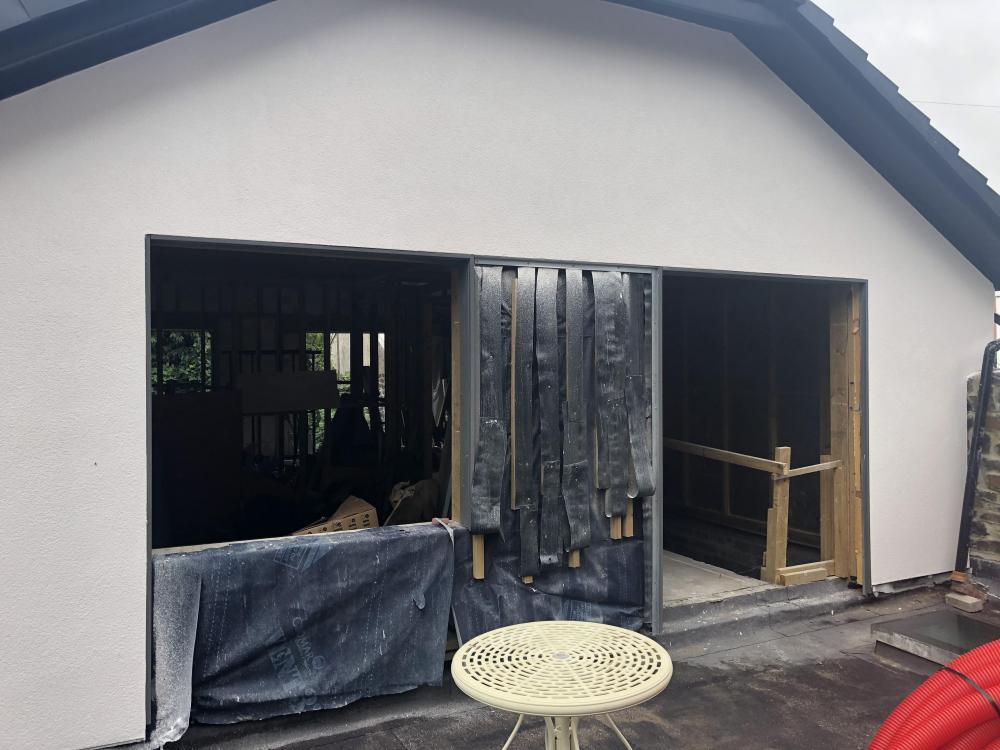
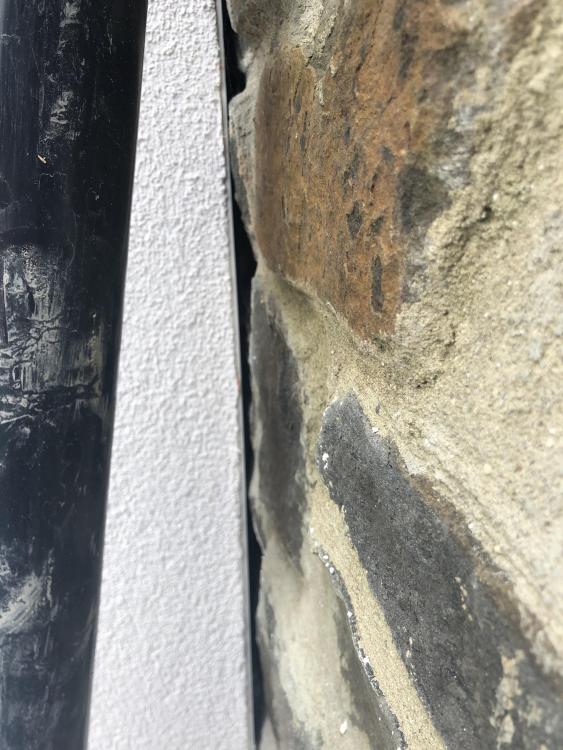


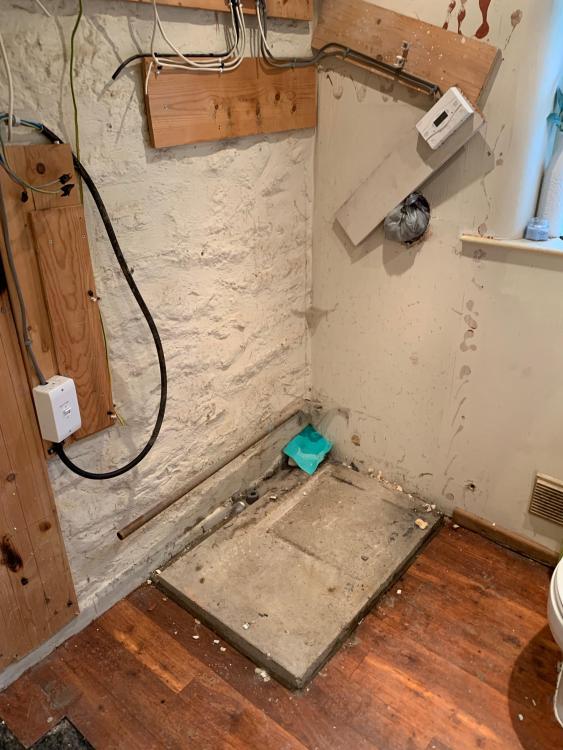
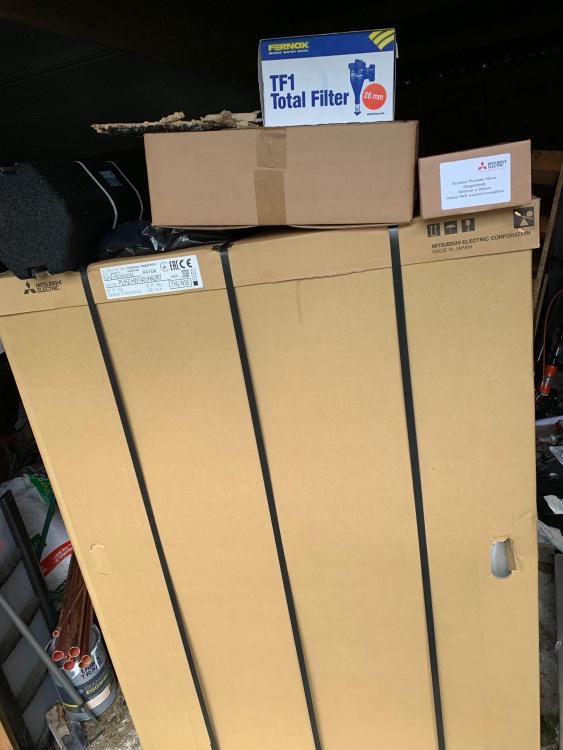
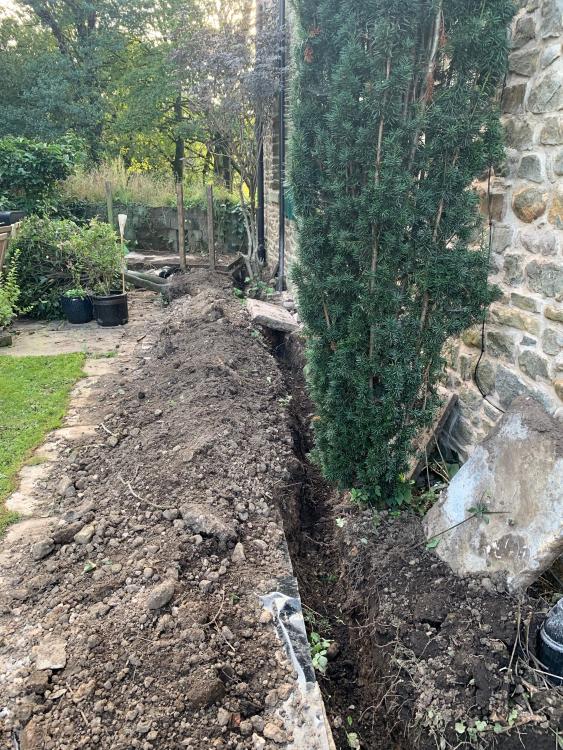
.jpg.c21f3ac78c9b7efd90cbdcb312744dc5.thumb.jpg.7adcad4c0e384f5ecd7d56b0618df6e5.jpg)







